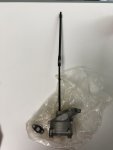Uncle Gump
Token Old Guy
TRS Event Staff
TRS Forum Moderator
Supporting Member
VAGABOND
TRS Event Participant
- Joined
- Sep 17, 2018
- Messages
- 13,968
- Reaction score
- 13,458
- Points
- 113
- Location
- Ottawa IL
- Vehicle Year
- 2006/1986
- Make / Model
- Ranger/BroncoII
- Engine Size
- 4.0L SOHC/2.9L
- 2WD / 4WD
- 4WD
- My credo
- Lead follow or get out of my way
If cranking with the starter it might not be cranking fast enough to make readable pressure.















